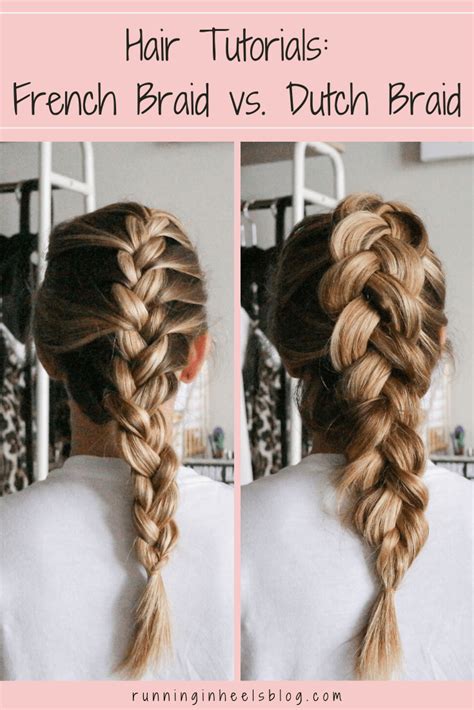Introduction
Braids are a timeless and versatile hairstyle that can elevate any look. Among the most popular braiding techniques are Dutch braids and French braids, both offering distinct aesthetics and benefits. In this comprehensive guide, we delve into the intricate details of Dutch braids vs. French braids, empowering you to choose the perfect braid for your next hair adventure.

Dutch Braid
Origin and Technique:
Dutch braids, also known as inverse braids, originated in the Netherlands and are characterized by their raised appearance. The braiding process involves crossing the outer strands under the middle strand, creating a three-dimensional effect.
Appearance:
Dutch braids stand out due to their prominent texture and volume. The hair is lifted and held tightly, forming a thick and sturdy braid. This technique creates a fuller, more dramatic look compared to French braids.
Benefits:
- Volume boost: Dutch braids are an excellent choice for adding instant volume and lift to fine or thin hair.
- Versatile styling: They can be worn on various occasions, from casual to formal events.
- Off-center placement: Unlike French braids, Dutch braids can be placed on either side of the head, providing more styling options.
French Braid
Origin and Technique:
French braids, a classic braiding style, originated in France. This intricate technique involves crossing the outer strands over the middle strand, resulting in a flatter, more intricate braid.
Appearance:
French braids are known for their delicate and feminine appearance. The braid is woven together tightly, creating a smooth and seamless surface. They are often adorned with accessories such as ribbons or flowers for a romantic touch.
Benefits:
- Secure hold: French braids offer a secure hold, making them ideal for active lifestyles or windy conditions.
- Versatile length: They can be braided with long or short hair, providing flexibility in styling.
- Elegant and timeless: French braids have stood the test of time, remaining a popular choice for special occasions and everyday wear.
Dutch Braid vs. French Braid: The Ultimate Comparison
| Feature | Dutch Braid | French Braid |
|---|---|---|
| Appearance | Raised, textured | Flat, intricate |
| Technique | Cross outer strands under middle | Cross outer strands over middle |
| Volume | Adds volume | Maintains volume |
| Versatility | Great for volume boost, off-center placement | Secure hold, versatile length, elegant |
| Difficulty | Moderate | Easy |
| Occasion | Casual to formal | Special occasions, everyday wear |
How to Choose Between Dutch and French Braids
Deciding between Dutch and French braids depends on your personal style preferences and the desired outcome. Consider these questions:
- Volume or Hold: Do you want a braid that adds volume or one that offers a secure hold?
- Styling: Do you prefer a bold and voluminous look or a delicate and intricate braid?
- Occasion: Is the braid intended for a casual or a formal event?
Tips and Tricks for Braiding
- Section your hair: Before braiding, divide your hair into three equal sections to ensure evenness.
- Brush thoroughly: Remove any tangles or knots from your hair before braiding to prevent breakage.
- Use hairspray: Apply hairspray to your hair before braiding to provide hold and prevent flyaways.
- Tighten as you braid: Gradually tighten the braid as you progress down its length for a secure and defined look.
- Secure the end: Finish the braid by securing it with a hair elastic or ribbon to prevent it from unraveling.
Creative Applications of Braiding
Braids are not just for everyday styling. Consider these innovative applications:
- Braided crown: Create a Halo of braids around your head for a bohemian and ethereal effect.
- Braided necklace: Use thin braids to fashion a unique and stylish necklace.
- Braided hair extensions: Enhance your hair’s length and volume by incorporating braided extensions.
- Braided updo: Elevate any formal updo by incorporating intricate Dutch or French braids.
- Braided headband: Create a stylish and functional headband by braiding fabric or yarn.
Conclusion
Dutch and French braids offer distinct charms and advantages, empowering you to create a wide range of hairstyles. Whether you crave volume, hold, or intricate designs, these braiding techniques provide endless possibilities for self-expression. By following our expert tips and exploring innovative applications, you can harness the beauty and versatility of these timeless braids.
